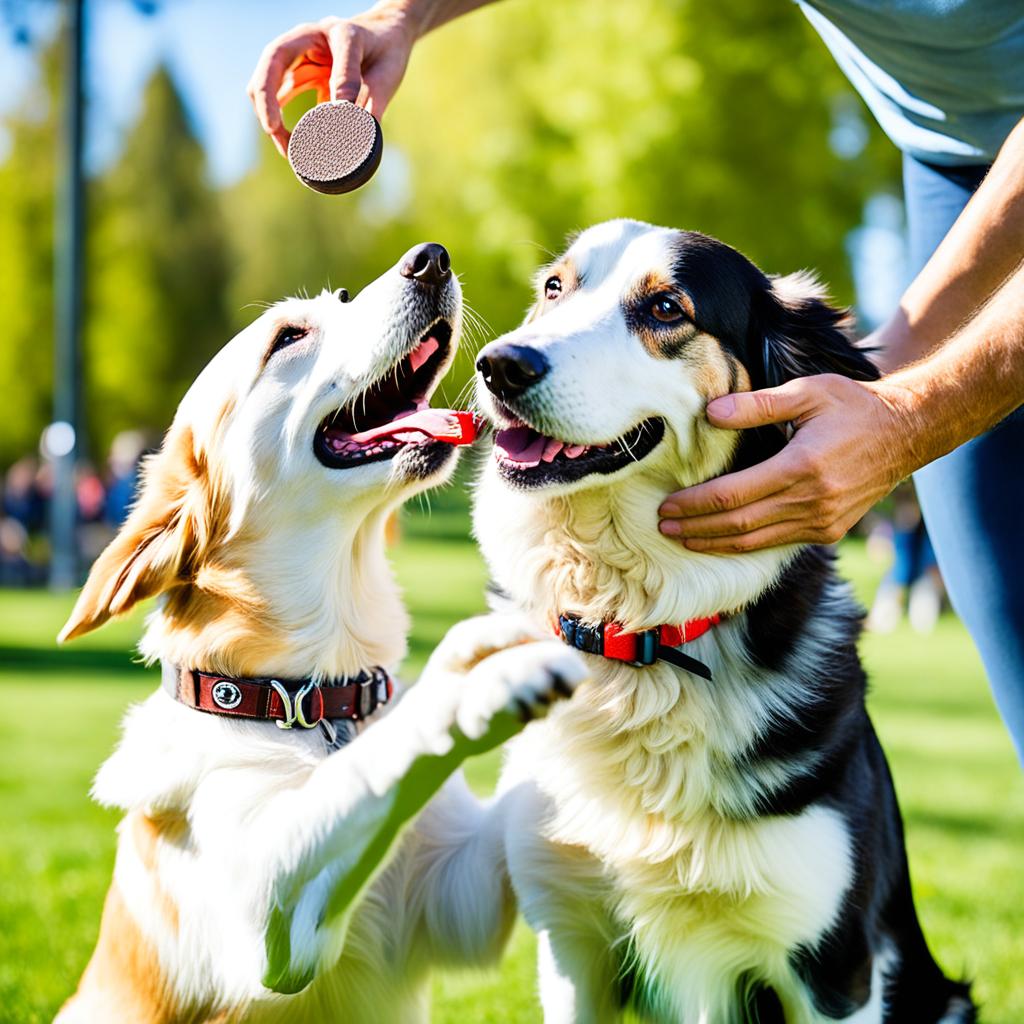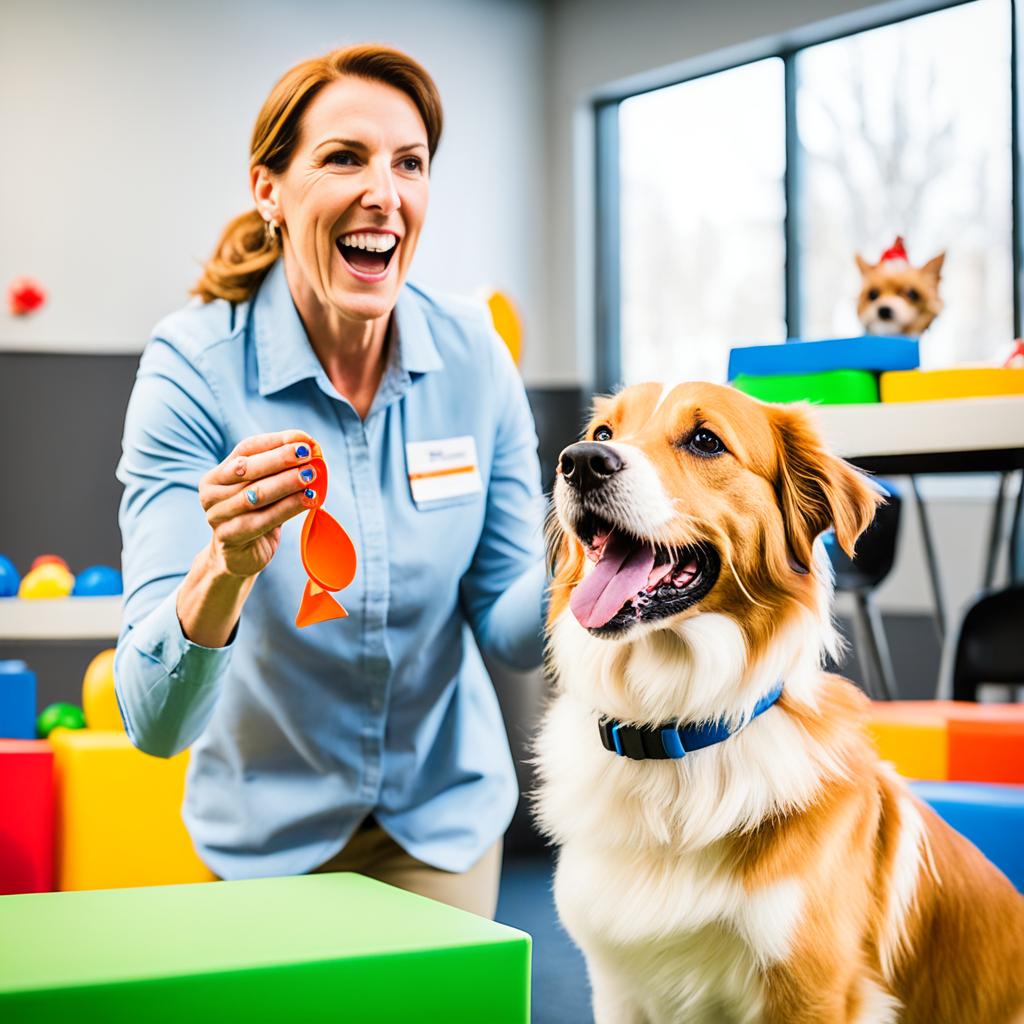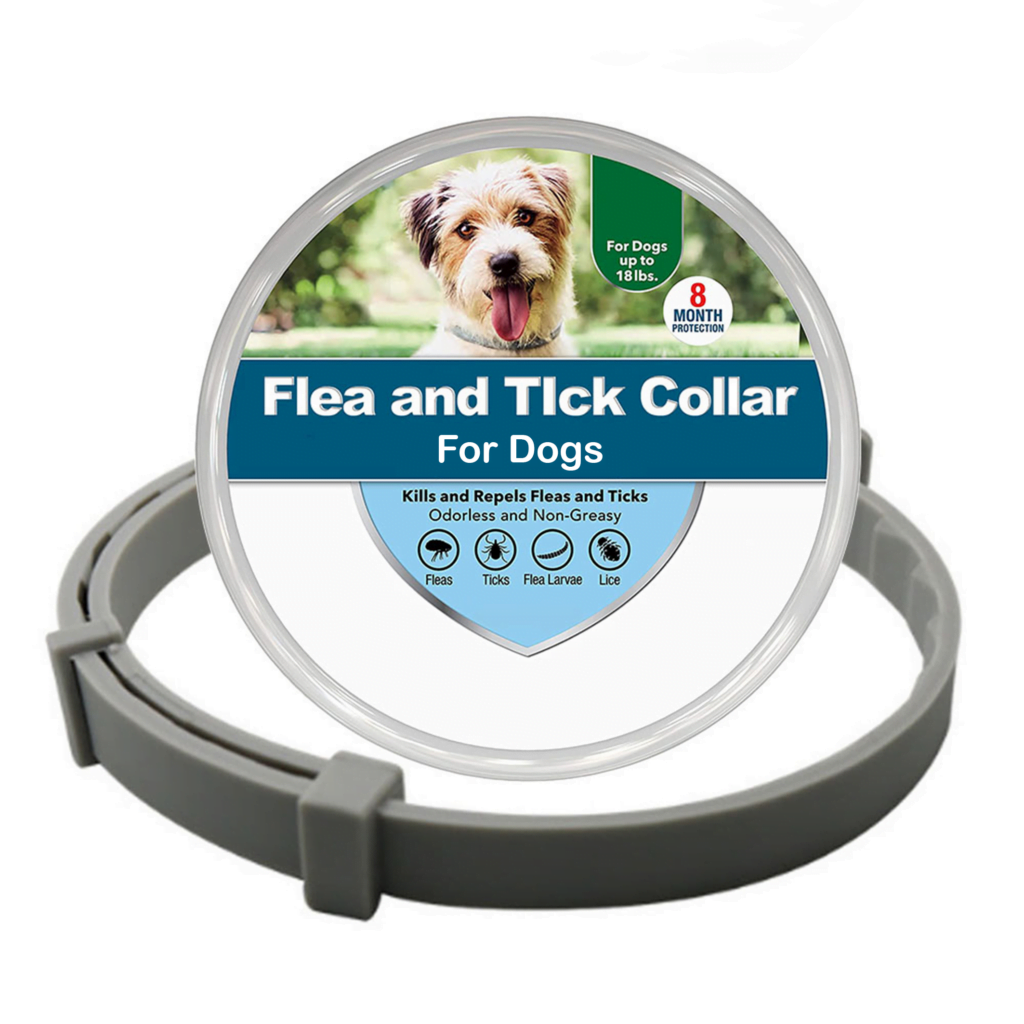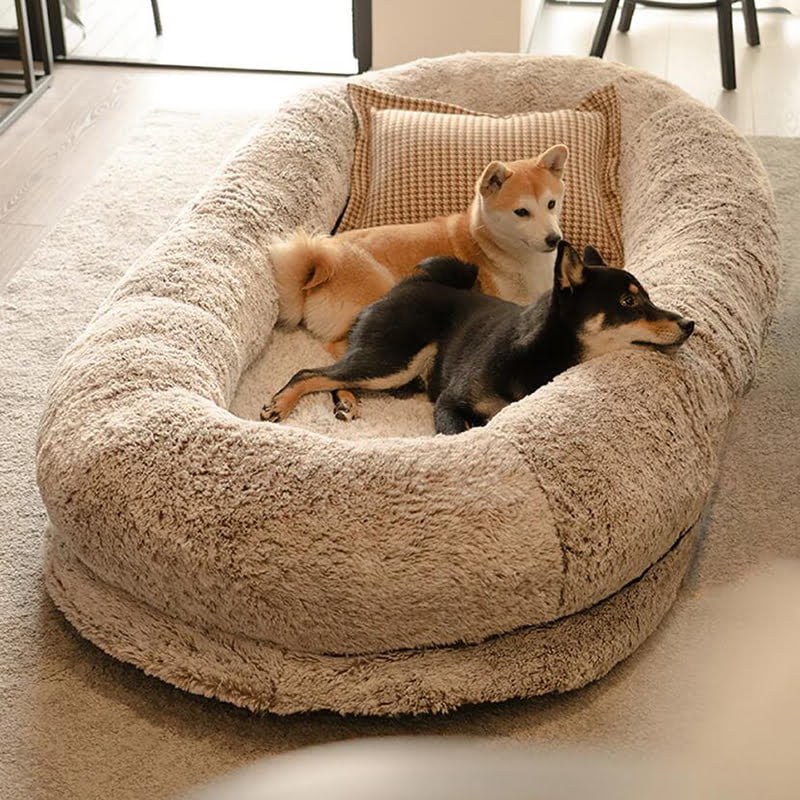Did you know that an estimated 57% of pet owners in the United States have not formally trained their pups? Yet, effective dog training is a crucial component that enriches the bond between you and your beloved canine. Embracing obedience training and professional dog training methods not only addresses dog behavior modification but unlocks a level of understanding and communication with your furry friend that goes beyond basic companionship. Training for puppies and adult dogs alike can dramatically improve your pet’s behavior and transform your relationship into a harmonious partnership.
Whether you’re looking to instill basic manners or work through more complicated behavioral issues, there are tricks of the trade that can make the training process both enjoyable and effective. National Train Your Dog Month may just be the impetus you need to start utilizing professional dog training methods that create lasting positive results. From positive reinforcement to consistency in command use, each strategy plays a pivotal role in enhancing your dog’s ability to understand and respond to your guidance.
Key Takeaways
- Effective dog training deepens the bond with your dog and improves overall behavior.
- Obedience training is foundational to your dog’s safety and your peace of mind.
- Professional dog training methods help navigate behavioral challenges with tailored strategies.
- Training for puppies establishes good habits early, setting the stage for a well-behaved adult dog.
- Dog behavior modification through positive reinforcement and consistency benefits dogs of all ages.
- Integrating training into daily activities can reinforce commands and create enjoyable learning moments.
Understanding the Benefits of Dog Training
Dog training is much more than teaching your pet to obey commands; it’s a gateway to a myriad of benefits that enhance the human-canine relationship. Discover the multifaceted advantages that come with taking the time to properly train your dog, ranging from safety measures to preventing behavioral issues.
The Joy of Bonding with Your Dog Through Training
Bonding with your dog through regular training sessions not only strengthens your relationship but also establishes a line of communication between you and your furry friend. As you teach basic dog commands, you cultivate trust and a deeper emotional connection, turning training into a shared journey of progress and understanding.
Increased Safety and Freedom for Your Dog
Through consistent training, your dog will learn to respond quickly to your cues, effectively increasing dog safety. This enhanced safety allows for more freedom during activities such as off-leash walking or playing at the park, as you can trust your dog to heed your commands even in the presence of distractions.
Preventing Boredom and Behavioral Issues in Dogs
Mental stimulation is as vital for your dog as physical exercise. Dog training is one way to prevent canine boredom, a common cause of destructive behaviors. By engaging your dog’s mind, you are not only teaching valuable skills but also keeping them entertained and mentally sharp, warding off any undesirable habits stemming from restlessness.
| Training Focus | Benefits | Commands to Learn |
|---|---|---|
| Obedience | Listening to commands under various circumstances | Sit, Stay, Come |
| Safety | Staying within boundaries, avoiding dangerous situations | Leave It, Heel, Down |
| Mental Stimulation | Preventing boredom, reducing anxiety | Find, Puzzle Games, New Tricks |
Embracing Positive Reinforcement Techniques
Effective dog training is not so much about teaching your dog commands as it is about learning to communicate with your canine companion. Positive reinforcement for dogs has been a game-changer in how we motivate our pets and reward good behavior. This progressive method builds a bridge of understanding between you and your dog, ensuring that obedience is not borne out of fear but out of a mutual desire to please.
Veterinary experts agree that the most successful training techniques involve reinforcing your dog’s good actions, a practice that is far more effective and humane than outdated punitive approaches. Positive reinforcement is more than just the occasional treat; it’s about consistent and loving communication that strengthens the bond between you and your dog.

The Power of Rewarding Good Behavior
Rewarding your dog for their good behavior sets a foundation for what is acceptable, guiding them toward making better choices. When your dog sits on command or waits patiently by the door, acknowledging these actions with a tasty treat or a joyful belly rub signals to them that they’ve done well. These positive experiences are likely to be repeated, as dogs instinctively seek to recreate scenarios where they received rewards.
Discovering What Motivates Your Dog
Each dog is unique, with its own likes and dislikes. Finding out what most effectively motivates your dog—whether it’s a crunchy snack, a squeaky toy, or words of praise—can significantly boost your training efforts. When you use the right kind of incentive, you’ll see a real eagerness to participate during training sessions, helping to cement new skills and behaviors more rapidly.
Avoiding the Pitfalls of Accidental Reinforcement
It’s vital to be wary of accidentally reinforcing the wrong behavior. If you console your dog every time they whimper or jump on you, they might start to believe that these actions are the way to earn your affection. To avoid this, be mindful of the timing of your rewards. Make sure you’re reinforcing the actions you want to encourage, so your dog has a clear idea of what behaviors will get them the attention they crave.
Remember, the goal is to encourage actions that will lead to a balanced and harmonious coexistence with your furry friend, making positive reinforcement a cornerstone strategy for effective dog training.
Consistency: The Foundation of Effective Dog Training
Achieving dog training consistency is much like building any crucial habit—it requires commitment and uniformity. When you’re embarking on the journey of family dog training, setting expectations for dogs from the very beginning is a step that cannot be overlooked. Just as each brick in a foundation supports the entire structure, every command and action in dog training needs to contribute to the overall goal of a well-trained pet. Let’s delve into how you can apply uniformity to your dog’s training routine.
Unified dog commands are the bedrock of clear communication between you and your furry friend. Imagine if different pilots were giving discordant instructions to a single air traffic controller; the results would undoubtedly be chaotic. Similarly, a dog receiving mixed commands will not have a clear understanding of the expected behavior.
Training with Unified Commands and Expectations
Setting a standard set of expectations across all household members ensures that your dog does not get conflicting messages. Consistent cues, whether they are vocal commands or hand signals, help your dog understand what is expected without confusion. This clarity allows your pet to respond appropriately and can significantly enhance the training process. A tip to maintain this consistency is to hold a family meeting to decide on the specific vocabulary for each command, determining the exact words and gestures to be used by everyone when giving instructions to your dog.
Getting the Whole Family on Board with Training Protocols
When it comes to family dog training, collaboration is key. Each member of your household plays a pivotal role in reinforcing the training your dog receives. From children to adults, ensuring that everyone is on the same page—and using the same command lexicon—is vital. It can be helpful to create a visible reminder, such as a command chart, that all family members can refer to during interactions with the dog. This reinforces the unified approach and keeps everyone aligned.
As with every worthwhile endeavor, patience and persistence are imperative. Setting expectations for dogs is not a one-time event but an ongoing process of reinforcement. By applying these principles of consistency in dog training, you will foster an environment where your dog can thrive, equipped with the understanding and discipline needed to be a delightful member of your family.
Maximizing Training Sessions for Better Results
Unlocking the full potential of your dog’s ability to learn and obey begins with mastering the art of maximizing training sessions. Short, focused periods of instruction, along with varied training environments, are pivotal in practicing effective dog training strategies. By adhering to these principles, you can significantly enhance the dog obedience training process.

Why Short Training Sessions Work Best
It’s well-documented by the American Kennel Club that short dog training sessions can lead to more efficient learning for your canine companion. These brief, concentrated interactions help maintain your dog’s attention, reducing the likelihood of distraction or frustration. Aim for training bouts that span no longer than five minutes to retain engagement and optimize retention.
The Importance of Training in Varied Environments
Similarly, dog training environments play a crucial role in reinforcing command recognition. By introducing your dog to different settings, you are encouraging adaptability and focus amidst varying levels of distractions. This varied approach to training sessions not only boosts overall obedience but also ensures your dog is well-prepared for real-world situations where commands must be followed, regardless of the environment.
- Living room – Minimal distractions, good for learning new commands
- Backyard – Mild distractions, ideal for practicing obedience
- Park – High distractions, tests command retention and focus
Remember, balancing the length and location of your dog training sessions will greatly contribute to a more disciplined and responsive pet. Employ these tried-and-true methods to secure the best outcome for both you and your furry friend.
Dog Training Takes Patience: Building Behaviors in Stages
As you embark on the journey of dog training, remember that adopting a patient, stage-by-stage training approach is crucial. Teaching your furry friend requires understanding and time, especially when tackling complex canine behaviors.
Starting with Simple Commands Before Progressing
Initially, focusing on simple dog commands can set the foundation for a successful training experience. Commands like ‘sit’, ‘stay’, and ‘come’ are the building blocks of good behavior and help to establish a communication system between you and your dog.
Breaking Down Complex Behaviors into Manageable Steps
When you’re ready to move beyond the basics, the key to mastering more intricate tasks lies in breaking them down. By dividing complex canine behaviors into smaller, teachable moments, you can lead your dog through the learning process with clarity and support.
| Simple Command | Complex Behavior | Training Technique |
|---|---|---|
| ‘Sit’ | ‘Wait at the door’ | Incremental reinforcement near doorways |
| ‘Stay’ | ‘Stay with distractions’ | Gradual introduction of distractions during training |
| ‘Come’ | ‘Recall from a distance’ | Distance increment training with positive rewards |
Each achievement, no matter how minor, is a testament to the patience in dog training, and a celebration of your dog’s ability to learn and adapt. Keep reinforcing these steps, as they are essential in nurturing a well-behaved and responsive companion.
Keeping Dog Training Engaging and Fun
Discover the secrets to engaging dog training that not only reinforces good behavior but also makes every session a delightful experience for you and your furry friend. Training through play and celebrating dog successes can turn routine exercises into exhilarating and enriching moments. In this section, you’ll learn the art of infusing fun into your dog’s training routine that constant joy is just as much a part of the process as obedience.
Incorporating Play to Maintain Interest
Training your dog doesn’t have to be a repetitive chore. Transform it into an exhilarating playtime! Fetch can teach them to follow commands, while tug-of-war reinforces the ‘drop it’ cue. Remember, fun with your dog is the cornerstone of an outstanding training session—keep their tails wagging, and their ears perked with games they love!
Celebrating Even the Small Wins with Your Dog
No triumph is too small in the world of dog training. From a successful ‘sit’ to a perfectly timed ‘stay,’ each milestone deserves a celebration. These small parties boost your dog’s confidence and spur on further learning. Plus, celebrating dog successes strengthens your bond. Here’s a guide on commemorating these moments:
| Command Achieved | Ways to Celebrate |
|---|---|
| First successful ‘sit’ | Verbal praise and a favorite treat |
| Mastering ‘down’ | A quick game of fetch or extra playtime |
| ‘Stay’ for 30 seconds | Cuddles or a short walk as a reward |
| Returning ball during fetch | Toy or treat incentive plus verbal praise |
Training through play is a powerful tool, and by integrating it into your routine, you foster a joyous learning environment that’s exciting for your dog. So, keep the energy high and the rewards ready, as you dance along the fine line where training meets play. Make every session count and watch as your bond—and your dog’s skill set—grows stronger by the day.
Integrating Training into Your Dog’s Daily Life
Building a dog training routine is more than just setting aside time for practice; it’s about weaving valuable learning experiences into the very fabric of your dog’s daily life. When you integrate dog training into regular activities, you turn every moment into an opportunity for reinforcing the essential dog command cues that form the backbone of good behavior.
As you go about your day, consider the routines that can double as training sessions. Times for eating, going for walks, or simply playing with your furry friend can be enhanced with a touch of structure and learning. Below, we’ll explore how to capitalize on these routines and engage your dog with effective command cues.
Utilizing Routines as Training Opportunities
Routines are the cornerstone of a well-ordered life – both for you and your dog. Identify parts of your schedule that naturally lend themselves to training.
- Mealtime: Ask your dog to sit before filling the food bowl, reinforcing patience and obedience.
- Walks: Use leash time to practice ‘heel’ or ‘stop’, which improves your dog’s focus and behavior outdoors.
- Playtime: Integrate commands like ‘fetch’ or ‘release’ to make games an interactive learning process.
By associating these everyday practices with training, your dog will begin to see obedience as a normal, and even enjoyable, part of daily life.
Engaging Your Dog with Effective Command Cues
Translating your verbal commands into physical actions your dog can understand is key to effective obedience.
- Be consistent with both verbal commands and hand signals to establish clear communication.
- Vary your cues during daily training to assess what works best and keeps your dog engaged.
- Reflect on which commands are obeyed readily and work on those that are met with confusion or hesitation.
Remember, patience is as important a tool as any command cue. Through consistent practice and positive reinforcement within your daily routine, your training efforts will lead to a well-behaved and happy dog.
Conclusion
Embarking on the path of dog training is a commitment that extends beyond basic obedience; it’s an evolving journey of companionship and mutual growth. While you’ve learned various strategies to effectively communicate and strengthen your bond with your furry friend, the significance of recognizing limitations in your expertise is just as vital. Identifying behavior problems that persist despite your best efforts is a clear signal to consider the benefits of professional dog training.
Recognizing When to Seek Professional Training
Expert trainers are equipped with a breadth of knowledge to address and rectify complex issues that you, as an owner, may find challenging. With their specialized skills, professional assistance can provide targeted solutions, particularly for those times when your dog exhibits behaviors that disrupt the harmony of your home. Their intervention is not a sign of defeat but a smart step towards ensuring the well-being of your dog and all who interact with them.
Continuous Learning and Training as a Lifelong Journey
Understand that your quest towards dog obedience and behavior refinement doesn’t cease with the basics. Lifelong dog training is a continual process that keeps your dog mentally stimulated and socially engaged. It’s heartening to witness your dog mastering new commands or skills, reflecting the time and love invested. Each lesson, whether taught at home or under the guidance of a trainer, cements the lifelong learning journey you and your dog are traversing together—nourishing a relationship that flourishes with each shared experience and triumph.
Featured Products
Automatic Cat Feeder: Smart Control, 4L Capacity, WIFI Connection & Anti Clog
$30.05 (-25%)
Automatic Dog Feeder: Smart Control, 4L Capacity, WIFI Connection & Anti Clog
$30.05 (-25%)
Cat Bed with Thick Cover, Warm, Non-Slip and Waterproof Bottom
$10.69 (-29%)
Cat Flea & Tick Collar – Guaranteed results For 8 Months
$13.30 (-40%)
Cat Tree with Scratcher – Modern & Tall for Climbing and Relaxing
$51.40 (-29%)
Dog Flea & Tick Collar – Guaranteed results For 8 Months
$13.30 (-40%)
Dog Teeth cleaning and tartar removal Spray
$6.42 (-29%)
Endless Fun Cat Toy – Interactive Smart Electric Mouse
$21.40 (-29%)
Engraved Dog Collar: Elegant and Crafted with Premium Leather
$6.40 (-29%)
Human dog bed, Super Big and Comfy: Perfect for the Whole Family
$83.98 (-30%)
Reusable Lint Remover for Home, Car & Pets – Eco-Friendly & Easy-to-Use
$10.69 (-29%)
Smart Robotic Litter : The Most Advanced Cat Litter Box – Expert Choice
$192.83 (-29%)
Special Lint Remover : Guaranteed results for Clothes & Home
$13.30 (-40%)













